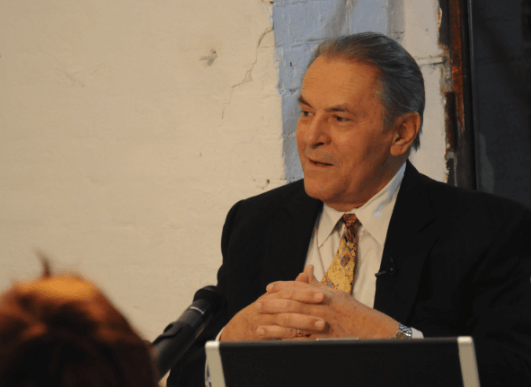One of the most influential people in today’s psychology is Stanislav Grof, his name has become an echo in this science thanks to his research on altered states of consciousness and holotropic breathing, and he is also one of the creators of the strength of the new. psychology, transpersonal psychology.
Stanislav Grof was born on 1 July 1931 in Prague, studied medicine and specialized in psychiatry; In addition, he studied Freudian analysis for more than 7 years, his experience is second to none, as he has worked in clinics and research for more than 50 years.
- In this article.
- We’ll talk about Grof’s life and work.
- We will explore the world of the researcher who studied the mind through psychedelics and take a tour of his main contributions to the world of psychology.
‘The problem with Western psychotherapy is that each researcher has focused his attention on a certain level of consciousness and has widened his discoveries to the entire human psyche. ‘ – Stanislav Grof-
The term transpersonal psychology was coined in 1969, and Grof promoted it with other authors. Grof developed these problems with Jamer Fadiman Miles Vich, Sonya Marguiles and Anthony Sutich; He also worked with Abraham Maslow and Ken Wilber. International Association of Transpersonal Psychology.
Grof points out that the other forces of psychology place little emphasis on spirituality, driven by this belief, began to address different practices that he believed could be integrated into the study of the human mind and conducted research with patients in these areas. saved spirituality as a legitimate aspect of our psyche.
Through his clinical practice, his research in transpersonal psychology and the contributions of other creators, we currently have a psychology that has a broader vision and encompasses different approaches and theories.
Stanislav Grof volunteered for a study at the Prague School of Medicine, where he had his first experience with LSD and, after his experience, became interested in studying this type of substance and the effects they might have on our brain. With a group of researchers, he began studying psilocybin, LSD and mescaline in a group of 40 people.
During the process, various psychotechnical and biological tests were carried out, the purpose of which was to determine if each of the substances produced specific effects or if together they produced similar states; moreover, in Grof’s words, see if it was possible to provoke an “experimental psychosis”. It would be of great help in solving the riddle of psychosis.
For 20 years, Grof has worked in the laboratory to do psychotherapy with psychedelic substances in Prague and the United States, after banning these investigations for, among other things, that they could lead to the use of these substances on the chromosomes, he moved to Ealen Institute, where he wrote his first book.
After moving, he also developed, with Christina Grof, the holotropic breathing technique, a non-pharmacological technique that produces conditions similar to those caused by psychedelic substances.
If we turn to etymology, the term holotropic comes from the Greek holos, which means totality, and trepein, which means advancing, that is, holotropic would mean the path to or going towards the whole, is therefore a path of self-exploration that works with consciousness and integrates various wisdoms of spiritual traditions.
This transpersonal psychotherapeutic technique classifies symptoms, blockages or problems as a product of forgotten or repressed content that can be accessed through enlarged states of consciousness or holotropic states.
The questions discussed during a holotropic breathing session refer to different states of consciousness, including areas such as perinatal and ancestral.
As explained on grof’s website, among its publications there are more than 160 articles in professional journals and books, so we decided to select those that, from our point of view, might be more interesting:
Stanislav Grof is currently professor of psychology at the California Institute of Integral Studies (CIIS) in San Francisco. In April 2016 he married Briggitte Grof, his traveling companion. Both travel the world organizing holotropic breathing seminars and workshops to provide greater accessibility to this technique. In short, Stanislav Grof is one of the living authors who has revolutionized the world of psychology the most in recent decades.

